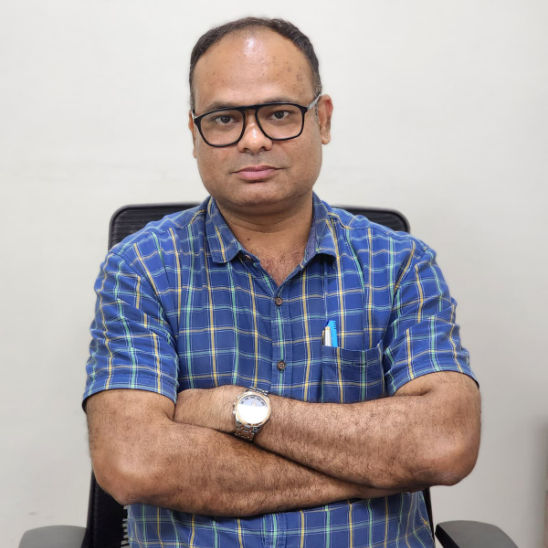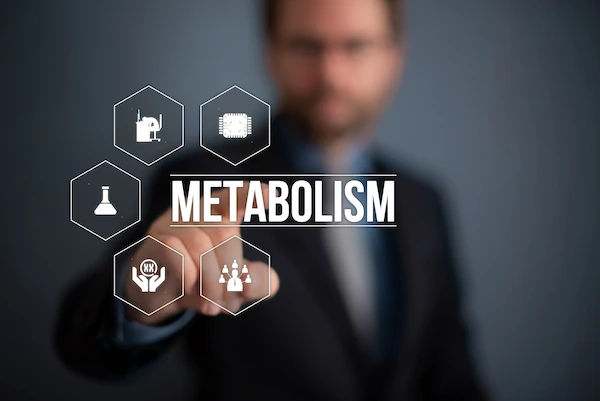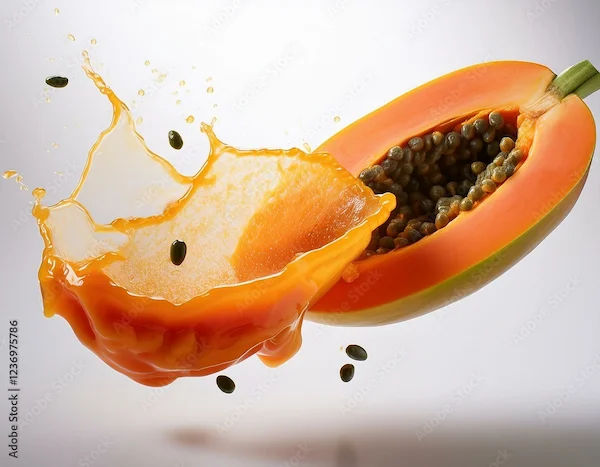Introducing the Advanced Vein Finder Device for Easier Blood Collection
Discover how a vein finder device and modern phlebotomy tools make blood draws easier, safer, and faster. Learn benefits, tips, and FAQs.

Written by Dr. Md Yusuf Shareef
Reviewed by Dr. Dhankecha Mayank Dineshbhai MBBS
Last updated on 18th Nov, 2025

Introduction: Why Easier Blood Collection Matters
If you have ever experienced a difficult blood draw, you know how stressful and uncomfortable it can be. Locating a good vein is not always simple. Some people have veins that are small, deep, or not easily visible, and repeated needle attempts can be painful and time-consuming.
That is where an advanced vein finder device can make a difference. Used alongside skilled phlebotomy techniques and proper safety protocols, this technology helps healthcare professionals visualise veins more clearly, supporting smoother, more efficient blood collection.
A vein finder does not replace professional expertise or sterile technique. Instead, it complements existing methods in hospitals, clinics, laboratories, and even mobile blood collection settings. In this guide, you will learn what vein finder devices do, who can benefit most, how they fit into standard phlebotomy practice, and what you can do to make your next blood test easier.Consult a Top General Practitioner for Personalised Advice
What Is a Vein Finder Device?
A vein finder device is a noninvasive tool designed to help clinicians locate superficial veins beneath the skin. The most common devices use infrared or near-infrared light to highlight the pattern of blood vessels, which appear as dark lines projected onto the skin’s surface. Some advanced versions use ultrasound technology to identify deeper or less visible veins.
These devices are not diagnostic tools and do not replace sterile procedures; rather, they serve as a visual aid to help select the most suitable site before inserting a needle.
Key Points
- Noninvasive: Uses light or sound waves without radiation or needles.
- Real-time visualisation: Projects or displays a live image of veins on the skin’s surface.
- Works with standard care: Used together with tourniquets, antiseptics, and other phlebotomy tools for optimal results.
Why Easier Venous Access Matters?
Finding a vein quickly and accurately benefits both patients and healthcare providers. Smooth venous access improves comfort, reduces procedure time, and can even enhance the quality of collected samples.
Potential Benefits
- Greater comfort: Fewer puncture attempts mean less pain and bruising.
- Time efficiency: Easier visualisation often shortens appointments and reduces delays.
- Patient confidence: A quicker, more successful draw may ease anxiety about needles.
- Improved sample quality: A well-placed draw reduces the risk of haemolysis (breakdown of red blood cells), which can affect test results.
It is important to remember that even with new tools, proper technique, infection prevention, and safety protocols remain essential. Every blood draw must still follow strict standards for hand hygiene, sterile equipment use, and safe disposal.
How the Device Fits into a Standard Blood Draw?
A vein finder can be seamlessly integrated into the usual steps of a phlebotomy procedure.
Typical Procedure
- Preparation:
Your clinician confirms your identity, reviews your medical history, and gathers the appropriate blood collection tubes and supplies. - Site Selection:
A tourniquet is placed above the chosen site to help veins fill. The clinician uses the vein finder to visualise potential veins and may also palpate (feel) them to confirm suitability. - Skin Cleaning:
The skin is cleaned thoroughly with antiseptic and left to dry to prevent infection. - Blood Collection:
The needle is inserted using standard sterile technique, the required amount of blood is drawn, and the tourniquet is released. - Aftercare:
Pressure is applied to stop bleeding, followed by a plaster or bandage. You may receive aftercare advice to help prevent bruising or swelling.
Who Might Benefit Most
While nearly anyone can benefit from smoother venous access, certain groups are especially likely to find a vein finder device useful:
- Individuals with difficult venous access (DVA) due to small, deep, or fragile veins
- Older adults with thin or delicate veins
- Children and infants, where small vein size can pose challenges
- People who are dehydrated or have poor circulation
- Patients with chronic illnesses affecting veins, such as diabetes or kidney disease
- Individuals who have experienced multiple failed venipuncture attempts
These devices can assist not only with blood tests but also with intravenous (IV) catheter placement and blood donations, depending on clinical need and practitioner expertise.
Vein Finder Devices Compared with Other Phlebotomy Tools
A vein finder is one of many tools that phlebotomists and nurses may use to make blood draws easier. It complements traditional methods rather than replacing them.
Common Tools and Techniques
- Tourniquet: Temporarily restricts blood flow to make veins more prominent.
- Warmth: A warm compress or blanket helps dilate veins and increase visibility.
- Positioning and gravity: Keeping the arm below heart level encourages veins to fill.
- Palpation: Feeling for the vein’s “bounce” remains an essential skill.
- Needle choice: Butterfly needles are often used for small or fragile veins.
- Ultrasound guidance: Provides deeper imaging when surface veins are unsuitable, especially in complex or high-risk cases.
- Transillumination: Special lights used in paediatric care to help locate veins in infants.
Choosing the Right Phlebotomy Approach for You
Patients do not need to decide which tools their clinician should use, but sharing relevant information can help ensure a smoother experience.
Share with Your Clinician
- Previous blood draw experiences (for example, “My right arm usually works better” or “I’ve had several failed attempts before”).
- Any medical conditions, surgeries, or injuries affecting your arms or veins.
- Whether you have experienced fainting or anxiety around needles.
This information helps healthcare professionals decide whether a vein finder or an alternative method would be most effective and comfortable.
Safety and Limitations
Although vein finders are safe and useful, understanding their limitations helps set realistic expectations. It includes:
Safety Highlights
- No radiation: The technology is safe for repeated use.
- Noninvasive and pain-free: Most light-based devices hover above the skin or gently rest against it.
Ultrasound devices: Use harmless sound waves and a small amount of gel for contact.
Limitations
- Not a guarantee: Even with better visualisation, a “first-stick success” cannot always be ensured. Vein depth, movement, or fragility may still present challenges.
- Operator skill matters: Success depends on the clinician’s ability to interpret images and use proper insertion technique.
- Infection control remains critical: The device complements but does not replace hand hygiene, sterile equipment, and correct disposal practices.
- Not diagnostic: These devices locate veins but do not assess health conditions.
- Training required: Users must be trained to interpret the projected vein map correctly and select safe entry points.
Tips to Make Your Next Blood Test Easier
A few simple actions before and during your appointment can make venous access easier and more comfortable.
Before Your Appointment
- Stay hydrated: Drink water in the hours leading up to your blood draw unless your clinician advises otherwise. Hydration plumps up veins, making them easier to find.
- Keep warm: Use a warm compress or wear long sleeves before your test to encourage blood flow.
- Eat normally unless fasting: If fasting is required, follow your instructions but continue to drink water unless told not to.
During the Blood Draw
- Relax your arm: Keep it still and supported, with your hand open. Avoid pumping your fist unless your clinician requests it.
- Communicate: Let your provider know if you have a history of difficult draws, fainting, or needle anxiety.
- Use distraction: Deep breathing, conversation, or focusing on another object can ease anxiety.
After the Blood Draw
- Apply firm pressure: Hold the gauze in place for several minutes to stop bleeding.
- Avoid heavy lifting: Refrain from using that arm for strenuous activity for the rest of the day.
- Watch for bruising: Minor bruises are common, but report any significant pain or swelling to your clinician.
What to Ask in Your Clinic?
If you know you have difficult veins or have had stressful experiences before, it is perfectly appropriate to ask questions such as:
- Do you use vein finder devices for patients with hard-to-find veins?
- Are there specialists or experienced phlebotomists available for complex draws?
- Can we try warming, adjusting arm position, or using a different needle size or type?
- If an IV line is required, is ultrasound guidance available?
Open communication helps your healthcare team plan the best approach for your comfort and safety.
Where You Might Encounter Vein Finder Devices?
These tools are becoming increasingly common across healthcare settings:
Hospitals and emergency departments
- Outpatient clinics and diagnostic laboratories
- Paediatric and neonatal units
- Blood donation centres
- Mobile phlebotomy services and home collection teams
If you believe you could benefit from vein visualisation, mention it when scheduling your appointment so the clinic can prepare accordingly.
Managing Anxiety Around Needles
Anxiety related to blood draws is common, and your healthcare team can help you feel more comfortable.
Helpful Strategies
- Distraction techniques: Listen to calming music, practise slow breathing, or focus on a distant object.
- Bring support: If permitted, a trusted friend or family member can accompany you.
- Ask for clear explanations: Knowing each step in advance often helps reduce fear.
- Choose your position: If you tend to feel faint, ask to lie down during the procedure.
Remember that communicating your concerns allows your care team to adapt their approach and provide reassurance throughout.
The Bottom Line
A vein finder device is a valuable modern tool that helps clinicians visualise veins clearly and improve the experience of blood collection. While it does not replace the skill and judgement of a trained professional, it can make procedures more efficient, less painful, and less anxiety-provoking—especially for people with veins that are difficult to locate.
If you have had challenging experiences in the past, let your healthcare team know. Together, you can explore options such as vein visualisation, warming, positioning adjustments, or alternative needle types to make your next blood test smoother and more comfortable.
Conclusion
Vein finder devices represent an impressive advancement in patient-centred care, combining technology with human expertise. When used appropriately, they enhance accuracy, efficiency, and comfort during blood collection and IV placement. By promoting better visualisation, they help reduce multiple attempts and associated anxiety.
Ultimately, the goal of any blood draw is not just obtaining a sample but ensuring the experience is safe, respectful, and as stress-free as possible—and vein finder technology is an important step towards achieving that.Consult a Top General Practitioner for Personalised Advice
Consult a Top General Practitioner for Personalised Advice

Dr. Mainak Baksi
General Practitioner
13 Years • MBBS , MD (MPH)
Howrah
Mainak Baksi Clinic, Howrah
(50+ Patients)

Dr. Rajib Ghose
General Physician/ Internal Medicine Specialist
25 Years • MBBS
East Midnapore
VIVEKANANDA SEBA SADAN, East Midnapore

Dr. Tapabrata Ray
General Physician/ Internal Medicine Specialist
4 Years • MBBS,DGM,CPMeC,ACMDC
Kolkata
MCR SUPER SPECIALITY POLY CLINIC & PATHOLOGY, Kolkata

Dr. Sougata Kumar
General Practitioner
8 Years • MBBS
East Midnapore
VIVEKANANDA SEBA SADAN, East Midnapore

Dr. Debdatta Pati
Psychiatrist
18 Years • MBBS, DPM, MD (PSYCHIATRY)
Kolkata
MCR SUPER SPECIALITY POLY CLINIC & PATHOLOGY, Kolkata
Consult a Top General Practitioner for Personalised Advice

Dr. Mainak Baksi
General Practitioner
13 Years • MBBS , MD (MPH)
Howrah
Mainak Baksi Clinic, Howrah
(50+ Patients)

Dr. Rajib Ghose
General Physician/ Internal Medicine Specialist
25 Years • MBBS
East Midnapore
VIVEKANANDA SEBA SADAN, East Midnapore

Dr. Tapabrata Ray
General Physician/ Internal Medicine Specialist
4 Years • MBBS,DGM,CPMeC,ACMDC
Kolkata
MCR SUPER SPECIALITY POLY CLINIC & PATHOLOGY, Kolkata

Dr. Sougata Kumar
General Practitioner
8 Years • MBBS
East Midnapore
VIVEKANANDA SEBA SADAN, East Midnapore

Dr. Debdatta Pati
Psychiatrist
18 Years • MBBS, DPM, MD (PSYCHIATRY)
Kolkata
MCR SUPER SPECIALITY POLY CLINIC & PATHOLOGY, Kolkata
More articles from General Medical Consultation
Frequently Asked Questions
1) Are Vein Finder Devices Safe?
Yes. These devices are completely noninvasive and use harmless light or ultrasound to visualise veins. They are an aid to site selection and do not replace sterile technique or clinical judgement.
2) Do Vein Finders Hurt or Touch the Skin?
Most light-based vein finders either hover above the skin or rest gently on it. Ultrasound devices make brief contact using gel, but they are still pain-free and noninvasive.
3) Do Vein Finders Guarantee a First-Try Success?
No. While they greatly improve visibility, success still depends on vein condition, patient factors, and practitioner skill.
4) Can These Devices Be Used for IV Placement as Well as Blood Draws?
Yes. In many clinical settings, vein visualisation aids are used to guide IV catheter placement as well as blood collection.
5) Can I Buy One for Home Use?
Consumer models exist, but blood collection should always be carried out by qualified professionals following infection control standards. If you require at-home testing, ask your healthcare provider about licensed mobile phlebotomy services that may use these tools.




